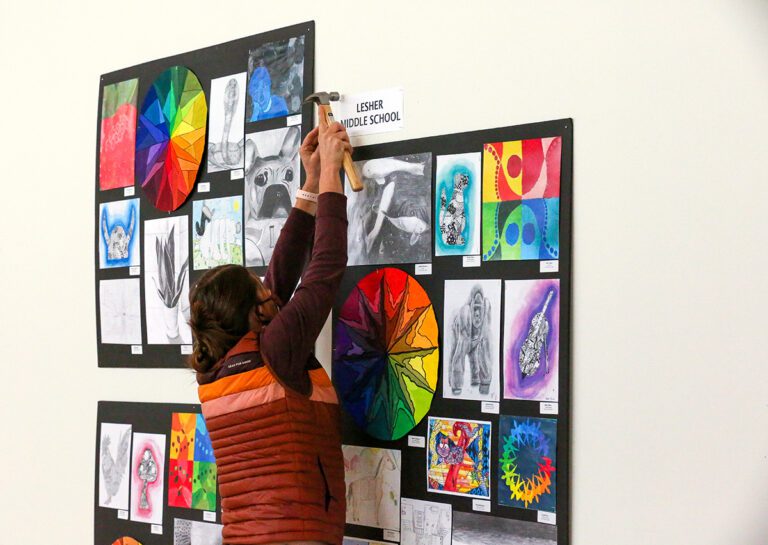
The idea of mindfulness may not be new to you, but thinking about it in regards to your fast-paced teaching job might be. It might be easy to practice mindfulness at home, soaking in a hot tub or stretching into a downward facing dog, but in the middle of a high-stress day at work? That’s much harder.
So, what is mindfulness? Mindfulness means maintaining a moment-by-moment awareness of our thoughts, feelings, bodily sensations, and surrounding environments.
Mindfulness means maintaining a moment-by-moment awareness of our thoughts, feelings, bodily sensations, and surrounding environments.
While this sounds great, unfortunately, many of us are on autopilot most of the time. Instead of being mindful, we’re being reactionary, allowing our emotions to get in the way and not really thinking before we act. Quite frankly, this makes sense. There is a lot to do!
If you think about it, practicing mindfulness is a little bit like putting yourself in a mental “time out.” Just like a student that needs a break from the group to cool off, mindfulness is like taking a step back before you speak or act. It’s allowing yourself to be present in the moment before taking action. Because, let’s face it – if we aren’t being mindful, we’re being reactionary, and that is a dangerous place to be!
I’d like to share an example of when practicing mindfulness was able to totally change my outlook on teaching. When I was pregnant and teaching, I would often get dizzy from low blood pressure. Each morning, I knew the afternoon ahead would be trying and challenging for me personally. So, five minutes before my kindergarteners entered the classroom, I would sit in my classroom, in my seat, down by the carpet. I would close my eyes and pump myself up, thinking about how I was going to talk to the students and reassuring myself I could get though the day, and it would all be ok.
This tiny little routine worked wonders. I was being mindful. I was setting an intention that was specific to an issue I was having, and even though it might seem a little hokey, it helped.
I was setting an intention that was specific to an issue I was having, and even though it might seem a little hokey, it helped.
No matter the situation –personal, professional, one difficult class, or just the general pressures of teaching– there are ways to be more mindful and calm throughout the day. It can take many forms. Acting ‘mindlessly’ is a byproduct of stress, which is driven by the limiting belief that we can’t change the situations in which we find ourselves. The truth is, we can!
Below is a simple list of ways to teach more mindfully.
Teaching mindfully is…
– Thinking about the climate you want to create before students enter the room, especially with your most difficult classes.
– Visualizing what your ideal teaching day looks like. How would you act, what would you say, how would students react?
– Remembering to smile at students when they walk in the door each day.
– Reflecting on what worked, and what didn’t, and why, and attempting to make a small change next time.
– Being aware of how you respond to students with your tone of voice, words and actions.
– Not holding grudges against students who have past track records – starting fresh each class.
– Acknowledging the current situation you are in, and accepting it.
– Treating your body well, keeping your basic needs (food, water, bathroom) at the forefront.
– Letting go of comparing yourself to other teachers and instead competing with your own best self.
– Knowing what you need to be your best, and trying to incorporate more of it.
– Adopting a mindset in which you don’t judge your teaching or the teaching of others.
– Being alert to when you slip, taking a deep breath, and making a quick correction.
– Being present with students and not checking your cell phone or email.
– Sensing your own mood and energy levels and adapting accordingly. Sick? Plan less.
– Knowing yourself well enough to actually take that sick day when you can’t be your best.
– Sensing the needs of your students on a day-to-day basis and adapting accordingly.
Even when you are aware and attempting to teach more mindfully, sometimes things can (and will) fall apart.In these situations remember the following:
Good teachers understand that a bad day is just that, a bad day.
A bad day isn’t an indication of your overall teaching ability or your future career.
A bad day isn’t an indication of your worth as a person.
It’s just a bad day.
Luckily, we get a fresh chance each day to continue to be the teacher and person we want to be; they are very closely connected! Becoming more aware and mindful is the first step in this journey!
What is one of your struggles when trying to be more mindful in the classroom?
Any other tips to add to the list?
Magazine articles and podcasts are opinions of professional education contributors and do not necessarily represent the position of the Art of Education University (AOEU) or its academic offerings. Contributors use terms in the way they are most often talked about in the scope of their educational experiences.




